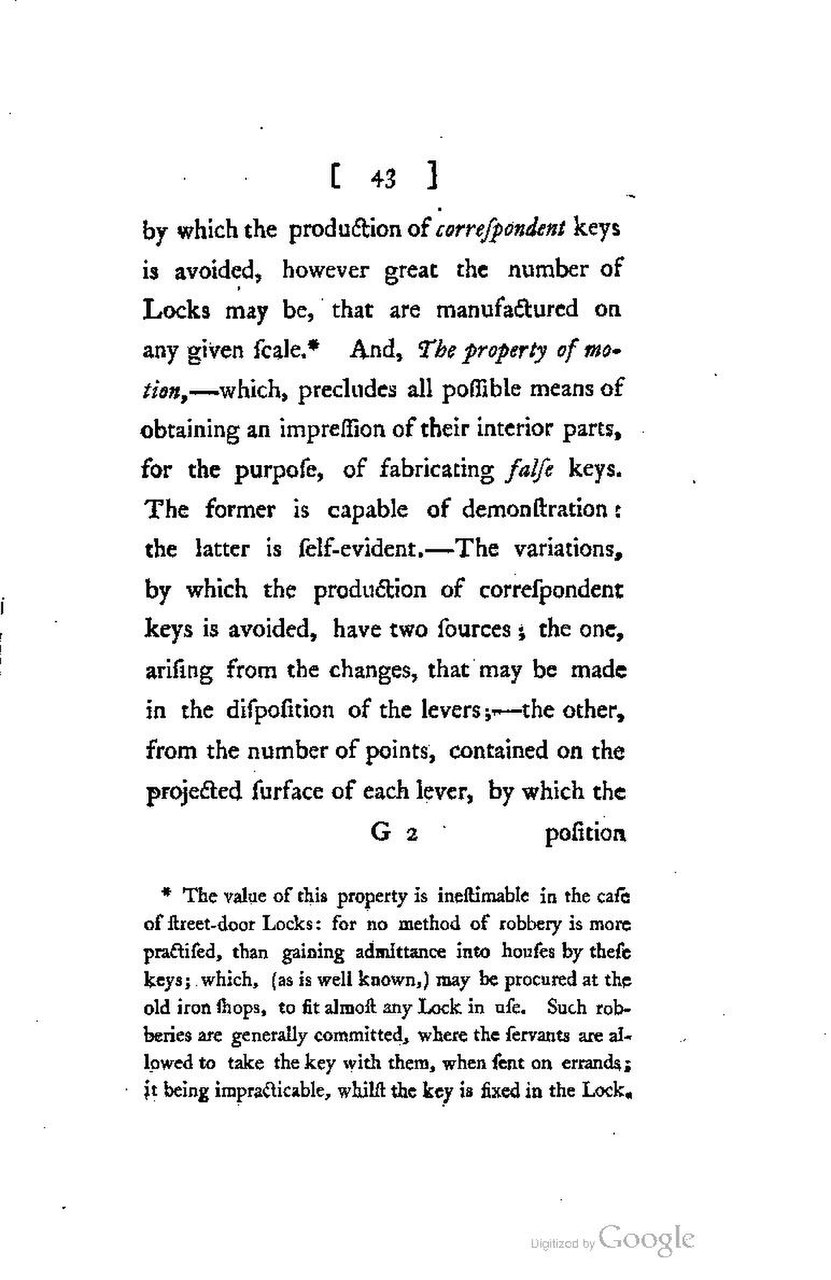[43]
by which the production of correſpondent keys is avoided, however great the number of Locks may be, that are manufactured on any given ſcale.[1] And, The property of motion,—which, precludes all poſſible means of obtaining an impreſſion of their interior parts, for the purpoſe, of fabricating falſe keys. The former is capable of demonſtration: the latter is ſelf-evident.—The variations, by which the production of correſpondent keys is avoided, have two ſources; the one, ariſing from the changes, that may be made in the diſpoſition of the levers;—the other, from the number of points, contained on the projected ſurface of each lever, by which the
poſition
- ↑ The value of this property is ineſtimable in the caſe of ſtreet-door Locks: for no method of robbery is more practiſed, than gaining admittance into houſes by theſe keys; which, (as is well known,) may be procured at the old iron ſhops, to fit almoſt any Lock in uſe. Such robberies are generally committed, where the ſervants are allowed to take the key with them, when ſent on errands; it being impracticable, whilſt the key is fixed in the Lock.
